
Beijing ZEHO Waterfront Ecological Environment Treatment Co., Ltd. was established in 1997 and is positioned as an "urban waterfront space operator". It is a national high-tech enterprise and a Beijing enterprise technology center.The company has been deeply engaged in the field of ecological environment for 27 years, with the concept of sustainable development at its core and guided by Nature-based Solutions (NbS). It has established three major business segments: ecological environment governance, ecological water infrastructure, and urban waterfront spaces, offering customers a systematic solution encompassing "technology + design + construction + operation + business", and is committed to facilitating sustainable development between humans and nature through intelligent ecology.
Learn more >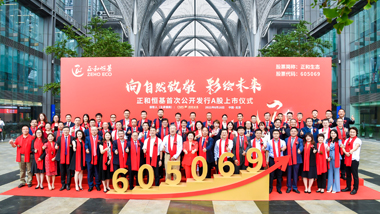
With 27 years of experience in the ecological environment field, ZEHO ECO upholds the concept of sustainable development as its core and is guided by Nature-based Solutions.
Learn more >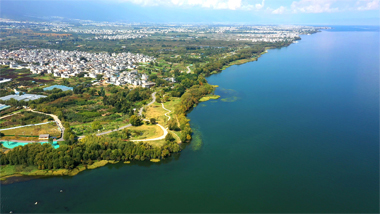
We dived deep into the eco-environment industry and built up a service system covering the whole industry chain of design, build, intelligence, investment, and operation.
Learn more >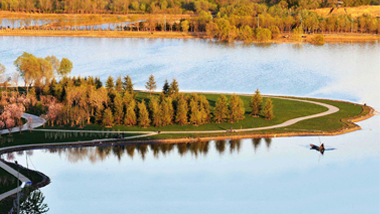

We stimulate the vitality of organizations and individuals through professional training system and career development path, and help employees and enterprises grow together.
Learn more >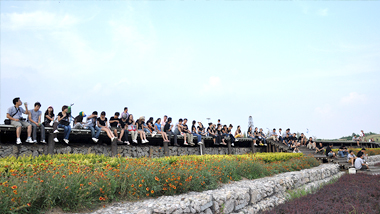
If you have any questions about our business, products, technologies and cooperation, please contact us through the following channels.
Learn more >
01 Introduction
Ecological engineering method is a new engineering technology based on species conservation, biodiversity protection and sustainable development, which follows the Nature-based Solutions (NbS). It combines the needs of water conservancy projects and ecological characteristics, uses living plants and artificial measures to create temporary structures, uses plant roots and soil fixation to create permanent structures, and stabilizes and strengthens the slope and improves the anti scour velocity through the buffer and interception capacity of plants. The rich waterfront plants not only help improve the water quality but also create a living environment. Therefore, the ecological engineering method is also known as a living structure, which is a Nature-based Engineering Solutions (NbES).
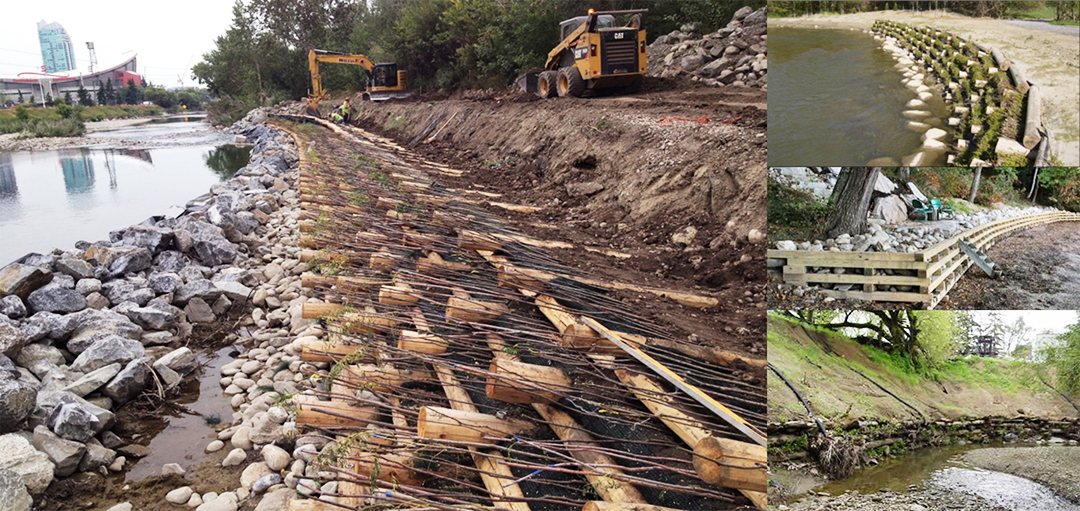
practical application of ecological engineering method
The application of ecological engineering method in project construction can produce considerable ecological benefits. While meeting the function of flood control and water-logging drainage of traditional water conservancy, it can also increase the diversity of habitats and species. Through artificial design and natural succession, it can form a complete and stable ecosystem and give play to its natural growth ability, improve the adaptability of the repair area to changes in the external environment. Vegetation construction can also play a role in improving water quality and preventing water and soil loss. From the perspective of human and social values, the ecological construction method adapts measures to local conditions and uses local materials, which reduces the cost of ecological restoration and facilitates later maintenance. As no reinforced concrete is used, carbon emissions during construction are reduced, showing the characteristics of low carbon; The constructed ecological wetland has the comprehensive value of landscape, culture and tourism, education, scientific research, etc., and can provide the economic value for the blue carbon sink.
This article will briefly introduce the innovation and practice of the ecological engineering method of ZEHO ECO in coastline management.
02 Coastal Area Management and Ecological Engineering Method
On November 1, 2016, the 29th meeting of the Central Leading Group for Comprehensively Deepening Reform deliberated and adopted the Measures for the Administration of the Protection and Utilization of Coastlines, which further emphasized the value of coastline protection in national strategies, green development, people’s well-being and other aspects, and also put forward higher and more urgent requirements for the cause of the protection and utilization of China’s coastline.
As a transitional zone between ocean and land, coastline is an important part of natural ecological space. With the rapid economic and social development of China’s coastal areas, the development intensity of the coastline and coastal waters is increasing. As a result, the area of bays and coastal wetlands has decreased, marine habitats have largely disappeared, and coastal ecological functions have significantly degraded, seriously threatening the safety of marine ecosystems; Extensive shoreline utilization methods, such as sea reclamation, tidal dyke, land reclamation, etc., have dramatically reduced the number of shorelines available for development and utilization, highlighted the conflicts between industries in shoreline utilization, and affected the sustainable economic and social development of coastal areas. Guided by the concept of protecting ecological security, adhering to scientific regulation, optimizing shoreline configuration, and expanding hydrophilic space, ecological measures with low cost, low maintenance, and high ecological benefits have become preferred.
Over the years, ZEHO ECO has been committed to the localization exploration and practice of the NbS concept and ecological engineering technology. While learning from the European ecological restoration technology system, it has formed a modular design and construction process from site identification - hydrological simulation - target species - design - review - construction, and constantly explored new methods and technologies suitable for China’s ecological environment protection needs. In view of the common problems of the hardening of sea walls in coastal cities and the lack of ecological functions in coastal zones, ZEHO ECO, together with the Third Institute of Oceanology of the Ministry of Natural Resources and the Island Center of the Ministry of Natural Resources, has established a key laboratory for marine ecological protection and restoration at the ministerial level to research and develop the ecological transformation technology of hard sea walls, the construction technology of triple composite ecological sea walls, coral reef migration, beach restoration Mangrove restoration and other coastal waters ecological comprehensive management technology products have been applied and pilot tested in Nansha, Putian, Dongguan, Shenzhen, Dongfang and other cities in Guangzhou, and will be widely promoted to coastal cities in China in the future.
Among them, the newly developed ecological engineering module transfer technology based on the concept of NbS can solve the problems of low survival rate of powerful coastal vegetation and low efficiency of offshore construction costs, providing a new solution for the ecological transformation of hard seawalls.
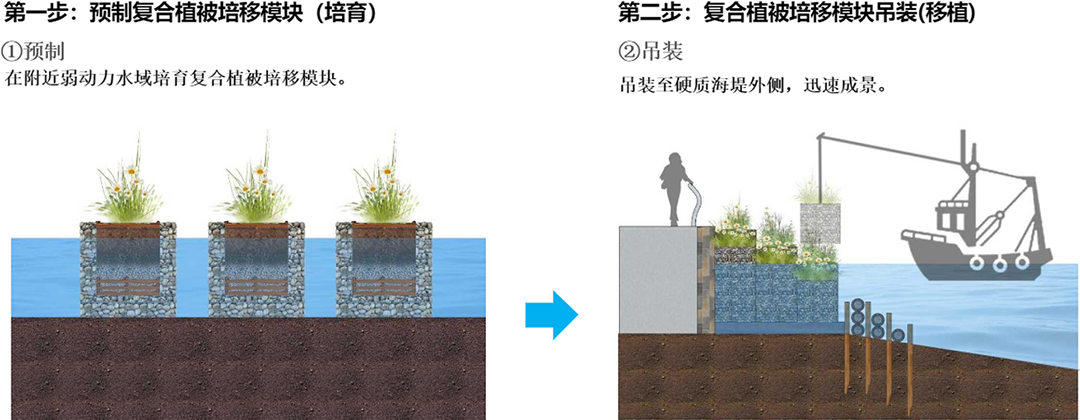
module transfer technology of ecological engineering method based on NbS concept
03 The Practice of Ecological Engineering Method in Coastal Area Management: Putian Mazu City Blue Bay Project
Project Background
Putian City is located in the east central coast of Fujian Province, with a meandering coastline of 443km, accounting for 9.72% of the total coastline of Fujian Province. However, with the development of the port industry, the development and utilization of the coastal zone has been accelerated. The carrying capacity of the coastal zone resources is increasing, and various contradictions are gradually highlighted. For this reason, Putian City has included the prevention and control of coastal sea pollution in the Special Plan for the Construction of Ecological Civilization in Putian City during the “Fourteenth Five-Year Plan” and the Marine Ecological Environment Protection Plan in Putian City during the “Fourteenth Five-Year Plan” and other special plans to focus on promoting, and defined the main measures, phased objectives and key governance projects for marine environment protection. Putian Blue Bay Project is among them.
Current Situation Investigation
Through the study of basic data and upper planning, the project team summarized the functional orientation, physical geography and socio-economic development of the project; During the detailed site survey, master the basic information of land use, biological community status, upstream water and aboveground objects of the project. The coastal zone structure before restoration was relatively simple, and the traditional seawall construction interrupted the biological corridor and ecological buffer zone in the land-sea transition zone; The natural habitat is seriously damaged, the biodiversity is lacking, and the ecological landscape effect is poor; Problems such as non-point source pollution flowing into the sea, shoreline garbage dumping, and aquaculture pollution affect the quality of the ecological environment. The lack of vegetation in the coastal zone is also difficult to purify and buffer.
Scheme Design and Implementation

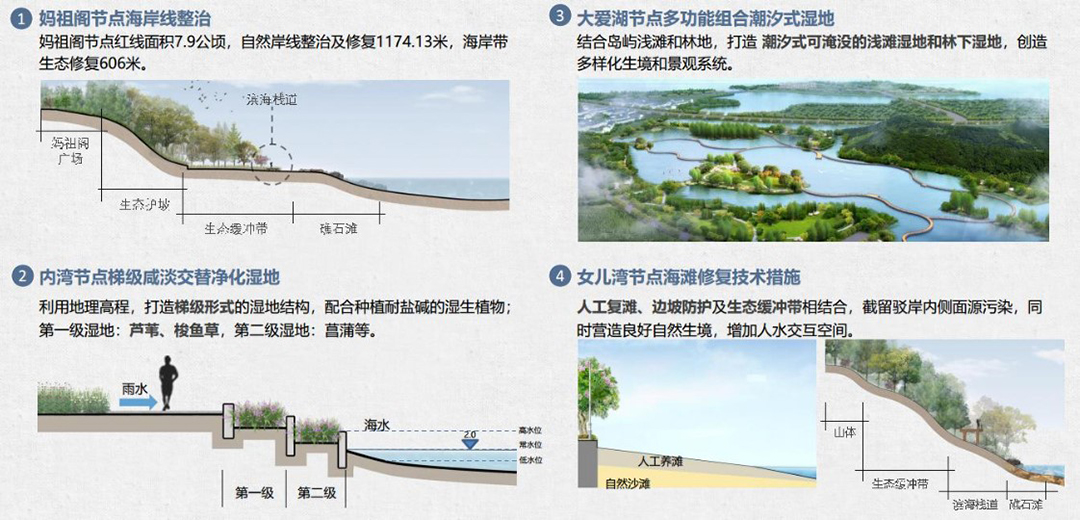
According to the site investigation, and in view of the site status and construction objectives, ZEHO ECO has designed a plan to promote ecological restoration and ecological transformation of the seawall by using ecological engineering methods according to the construction pattern of two wetlands (fresh water wetland and saline water wetland) one forest (coastal protection forest), one embankment (ecological seawall defense line), three beaches (Nv’er Wan beach, Mazu Ge beach, Mazu City beach), and designed targeted habitat construction plans for multiple nodes. The following will introduce the application of the ecological engineering method, taking the construction of the Ziyu Lake wetland habitat system as an example.
(1) Hydrological Condition Analysis
Ziyu Lake wetland is a lagoon affected by tides, with strong hydraulic scouring, frequent water level fluctuations, and high salinity, which requires targeted treatment. The site is at the intersection of fresh and salty water, and systematic habitat construction will provide higher ecological benefits. In the case, through the hydrodynamic modeling, the corresponding ecological engineering method is applied for the flow velocity, shear stress, slope and habitat in different regions.
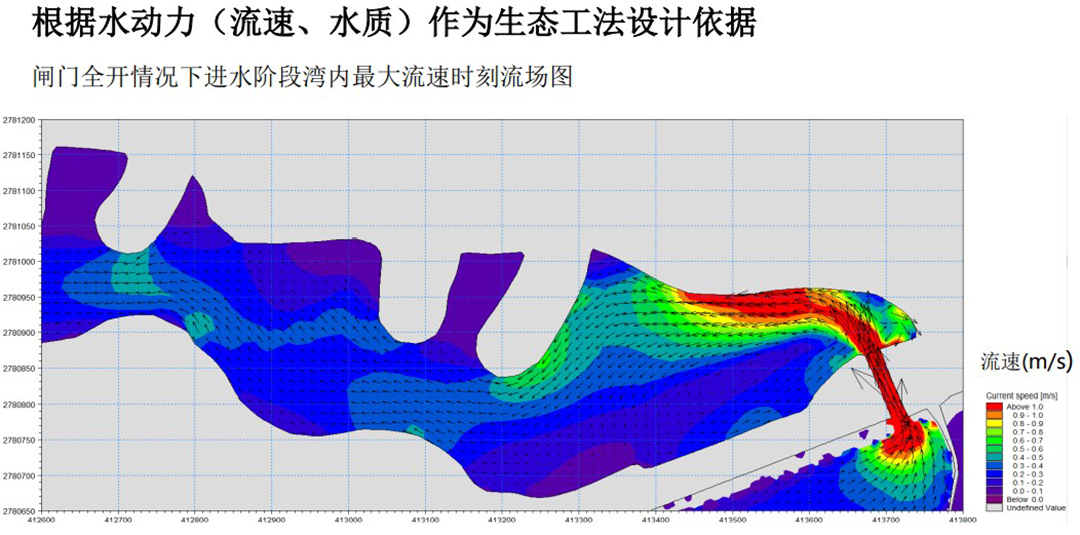
(2) Ecological Habitat Design
By analyzing the existing animal and plant species and their habitat characteristics of the Ziyu Lake, the project team planned to build a new habitat system and create a horizontal distribution of habitat and a vertical habitat of deep groove shoal in combination with the landform, to measure the geomorphic attributes comprehensively.
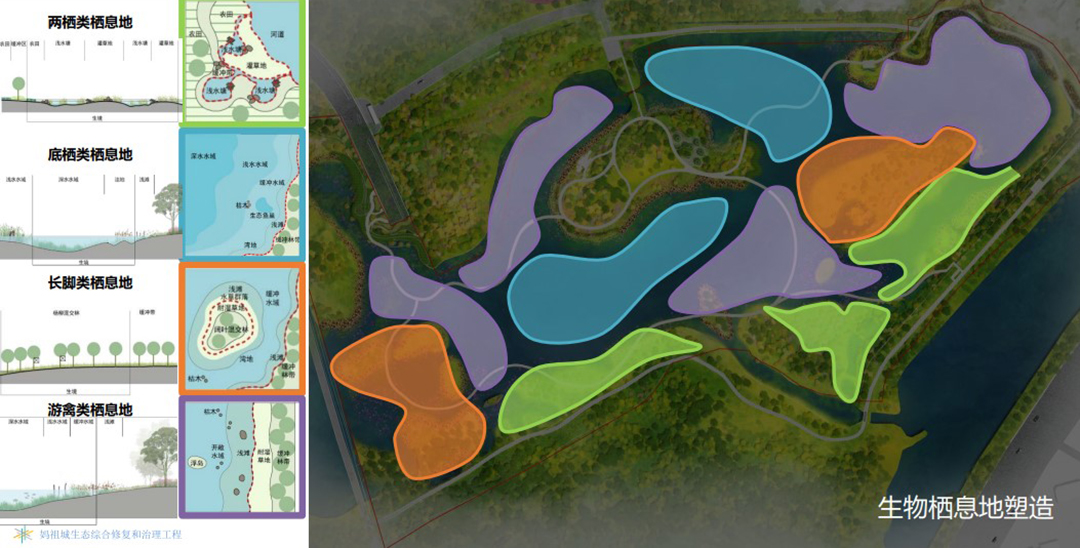
According to the requirements of animal habitat environment and the local vegetation conditions, the habitat system construction design was carried out to plan suitable habitat areas for benthos, amphibians, macropods and migratory birds, and the surface vegetation and specific construction methods were designed according to their needs for spawning, foraging, nesting, shelter, landform, water flow rate, etc.
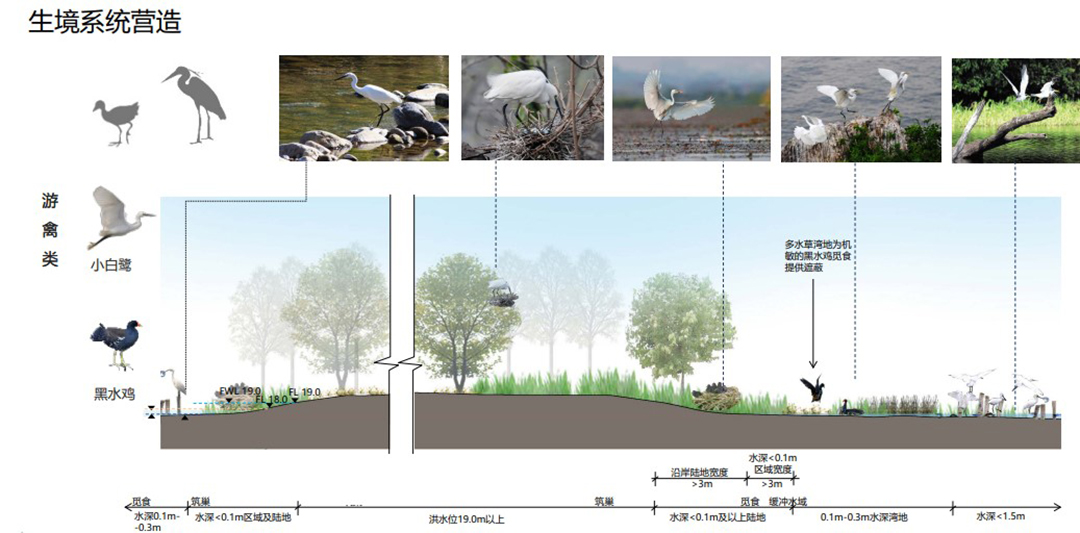
(3) Selection of Ecological Engineering Method
According to the site conditions and the needs of habitat construction, during the construction of the Ziyu Lake Wetland, five construction methods were mainly applied, including riprap planting, grid cutting, geotechnical meadow, aquatic plant roll and shrub pad cutting. The specific application scope is shown in the figure.
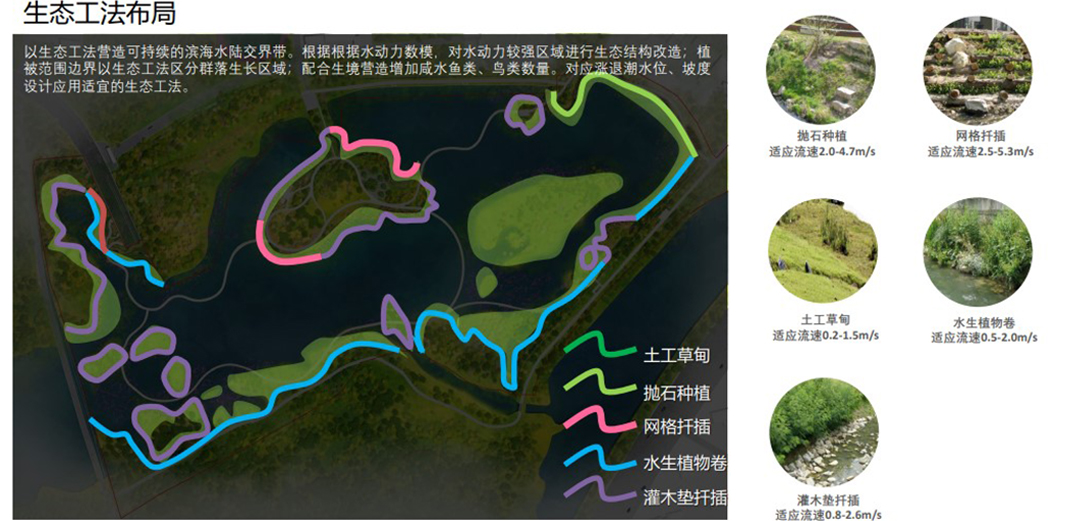
Among them, riprap planting is suitable for gently eroded upstream water with steep slope, and consists of plant cuttings and riprap. Lay staggered flat stones in the riprap revetment, insert the treated plant branches into the gaps between riprap. With the growth of plants, the plants and the wooden pile grid are connected as a whole, and the stability will increase year by year, effectively preventing the erosion of water flow and wind waves; The aquatic plant roll reflects the characteristics of local materials, which use plant root groups and construction waste to bind into a roll structure to create animal and plant habitats.

before and during construction
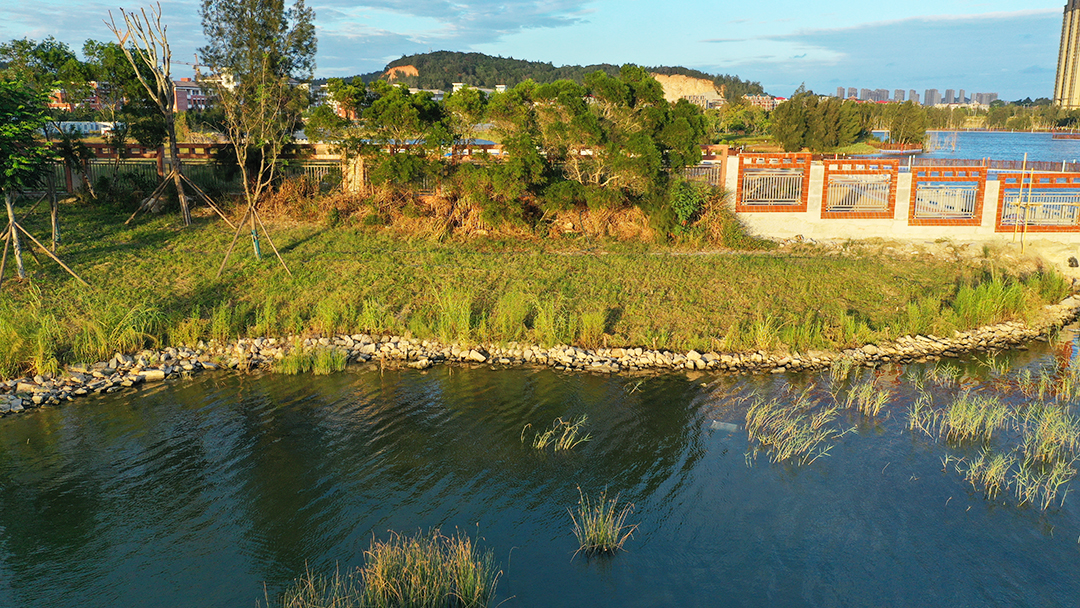
after completion
The living firewood bundle revetment is woven into a network of degradable plant materials for fixation, planted with living plant root groups, and planted with grass to grow through the net cushion, so that the firewood bundle, plants, net cushion, root system and soil can be integrated to form a solid slope, which can effectively prevent surface runoff scouring or water scouring damage.

before and during construction
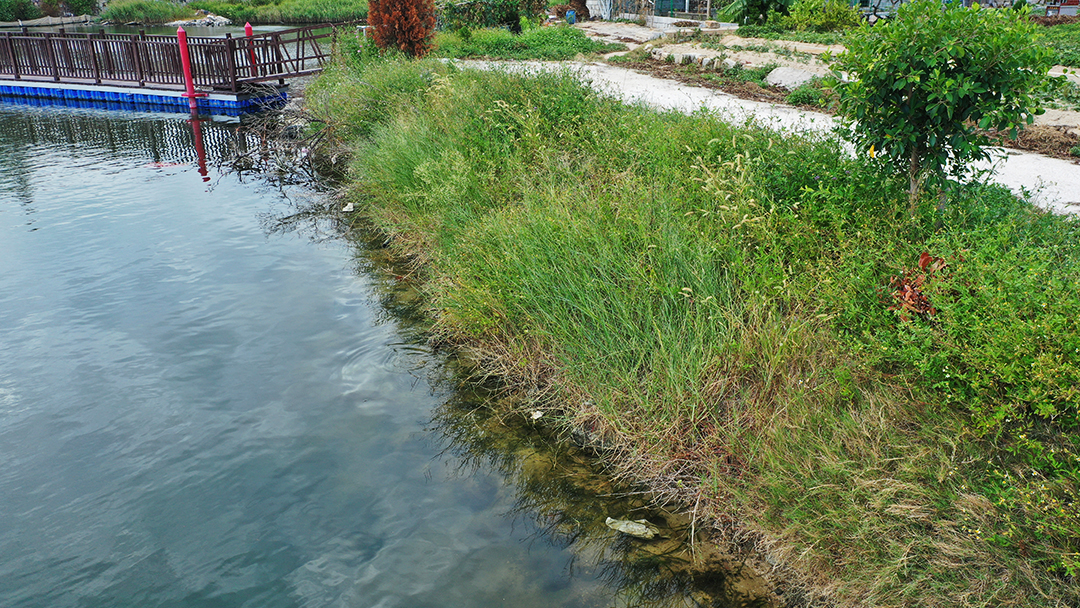
after construction
In combination with landscape design, slope and habitat requirements, the grid cutting and cutting shrub pad revetment can conserve water and entropy for plants under more stringent conditions, increase the roughness of the slope facing the water, and intercept local plant seeds brought by water level fluctuations here, to enable nature to work and grow naturally and provide suitable habitat for animals.

during construction
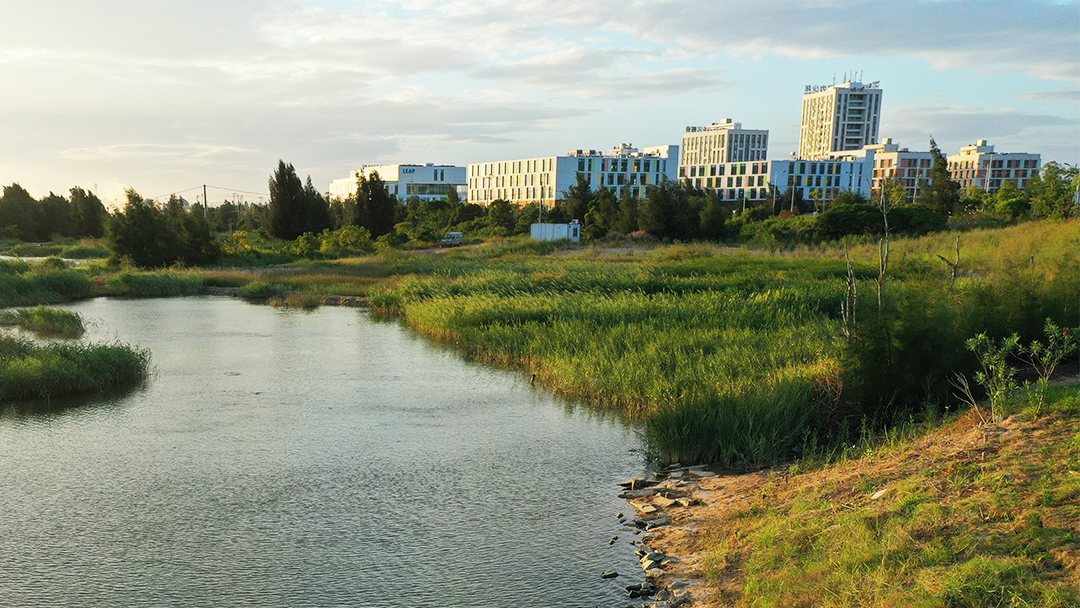
after construction
(4) Project Maintenance
By monitoring and mastering the vegetation succession law of the ecological engineering method in Blue Bay, the project team is also simultaneously monitoring the stability of the engineering method, the intervention of invasive species and the biomass detection, and building a harmonious and stable organic ecological shoreline through dynamic plant succession.
In order to accurately monitoring various comprehensive indicators of the coastal zone, effectively control coastal environmental pollution, and measure the remediation effect of China’s Blue Bay Remediation Action Project and other coastal ecological restoration projects, in the Blue Bay Project, Putian Blue Bay (North Bank) ecological environment big data platform has also been built, including: Marine Environment Impact Tracking and Monitoring System, Marine Data Integrated Management System, Marine Ecological Restoration Affect Evaluation System and corresponding supporting hardware equipment. The construction of this system has provided support for the development and research of emerging blue economies such as carbon sink monitoring, carbon neutralization deduction and evaluation, and estimation of gross ecosystem product (GEP), and also helped to monitor the effect of eco engineering methods, and manage the operation and maintenance needs. Its data will further promote the development of the application technology of eco engineering methods.
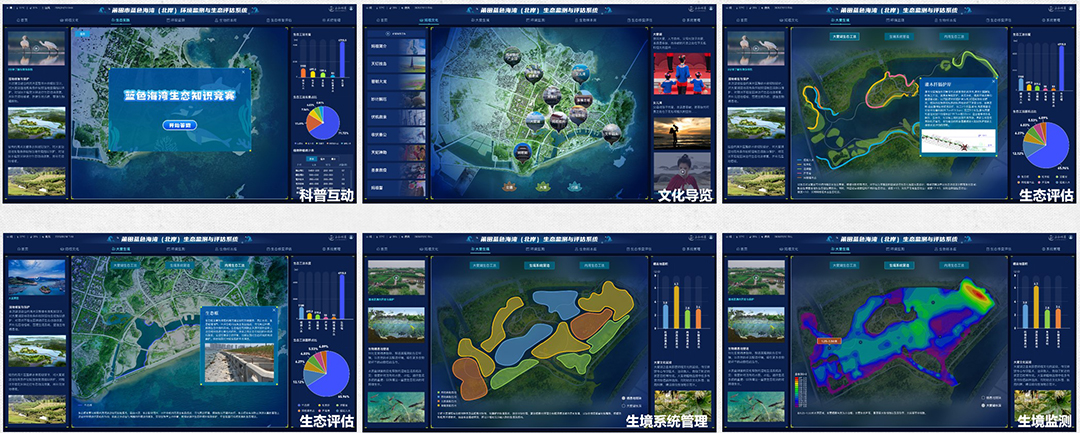

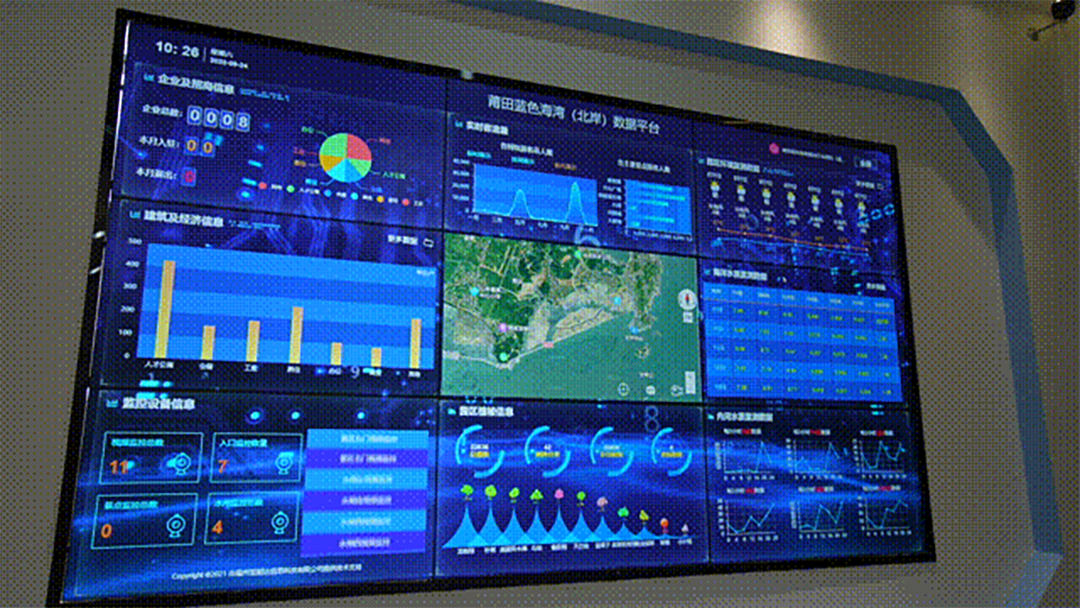
Putian Blue Bay (North Bank) Ecological Environment Big Data Platform
(5) Ecological, Social and Economic Benefits
Through the construction and transformation of ecological engineering method, Putian Blue Bay has achieved the consolidation and upgrading of sea wall, ecological restoration and improvement, and landscape reconstruction and sharing. After the renovation of Mazu City seawall, the wave protection standard has been raised to once in 50 years. Before 2020, the Ziyu Lake Wetland is still a messy depression, with weeds, garbage dumping, and surrounding people building fences; After transformation, this wetland, which is only a few hundred meters away from the sea, has become a coastal ecological park where people and nature coexist harmoniously. It has played a role in stabilizing the coastline and restoring the intertidal habitat. With the improvement of the surrounding water environment and vegetation environment, many fish and birds also inhabit here. Today, Neiwan Plot is covered with green plants, with a repaired ecological area of 22 hectares, and a fitness trail, which has become a new online red card punching place in the local area.
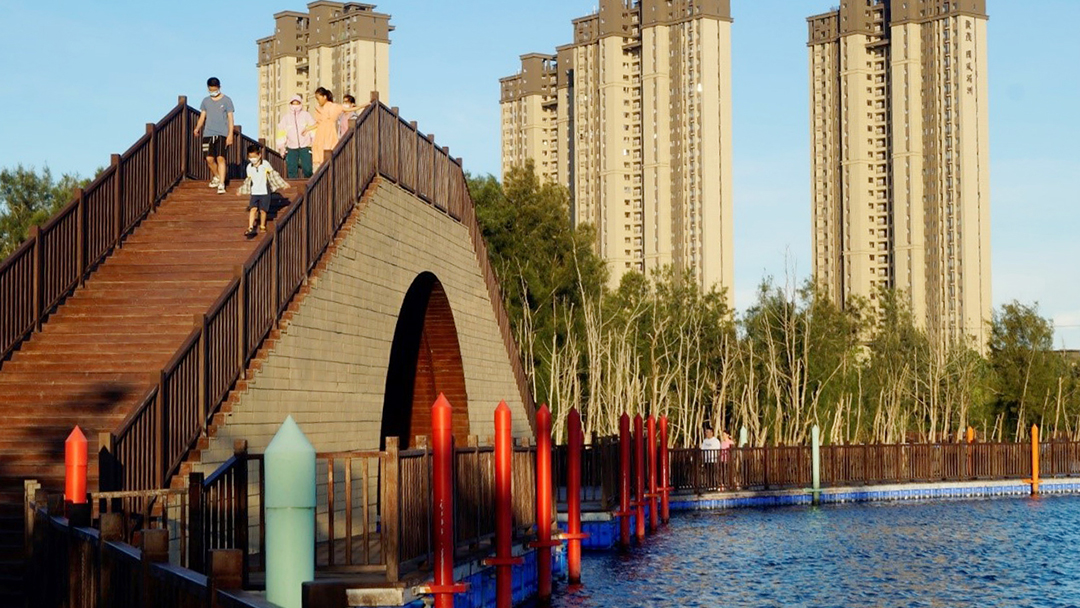
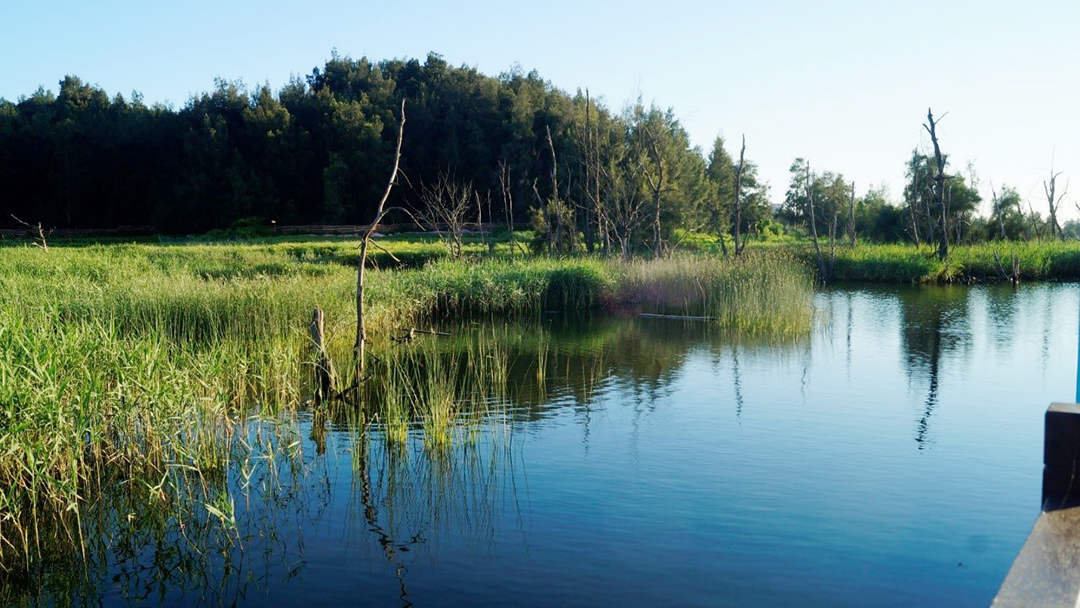
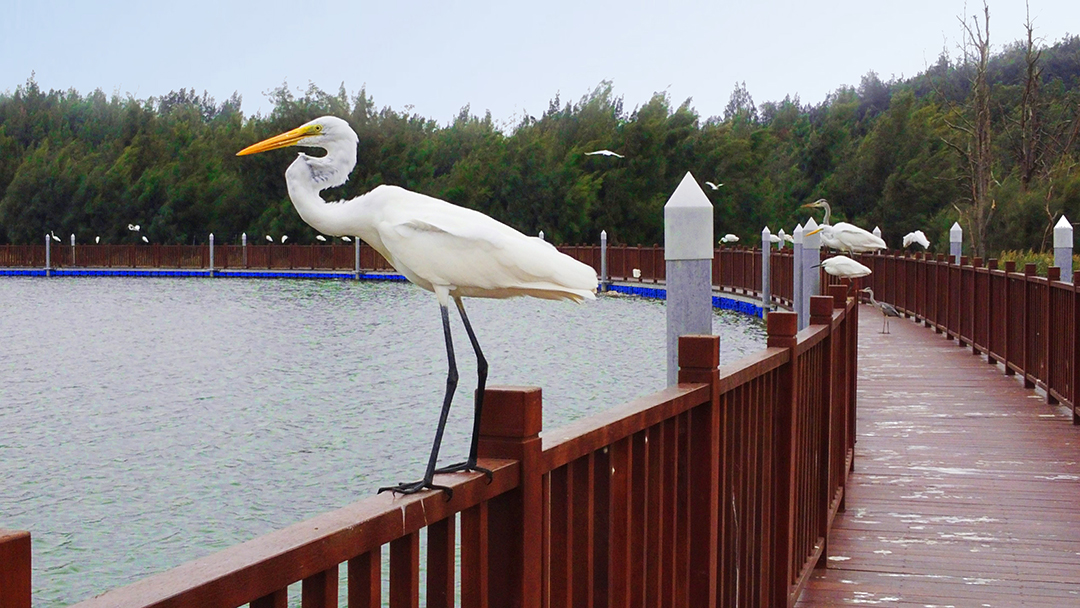
The improvement of ecology and landscape has also brought considerable economic benefits. Porphyra is widely planted in the coastal zone of Nv’er Bay, and the output is often reduced because of the waste returned from the sea; After ecological restoration, not only the invasion of alien species Spartina Alterniflora has been alleviated but also the environmental improvement has brought economic benefits to farmers. According to the front page of Fujian Daily, Jiangshan Village, where laver covers an area of about 2000 mu, can earn 6 million yuan for the first crop. In the past, only two crops could be harvested, and after remediation, five or six crops could be harvested at most; The output and quality of sea products such as razor clams have also improved significantly, and the production and living standards of farmers have also improved. Because of its beautiful ecological style and ingenious integration of Mazu culture, the Blue Bay has built a large tourism circle of Mazu culture, formed a boutique project of “one-day tour connecting ten scenic spots”, and promoted the rapid development of related industries.
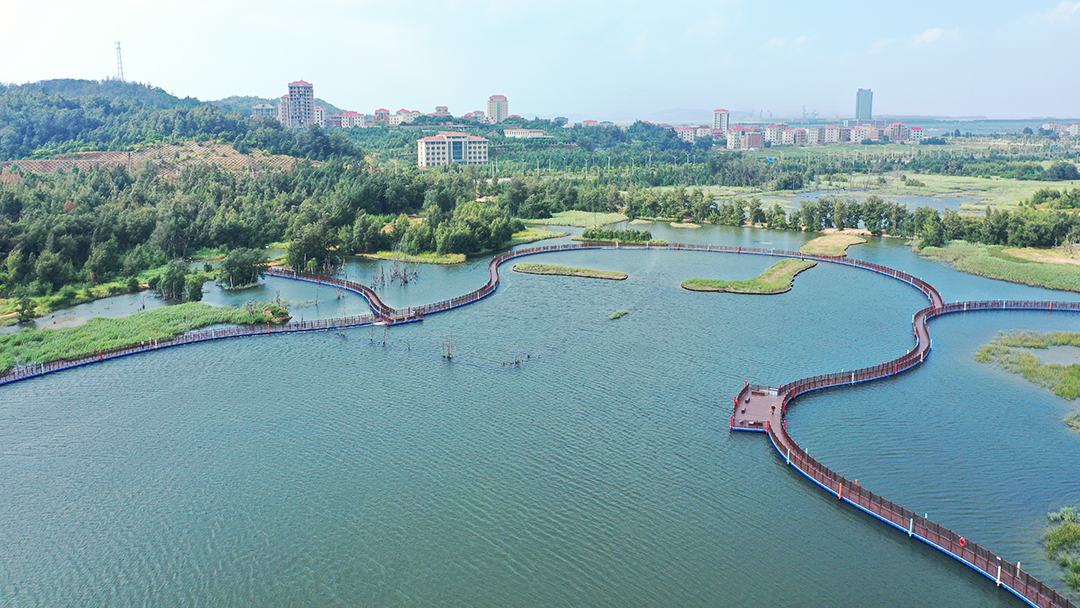
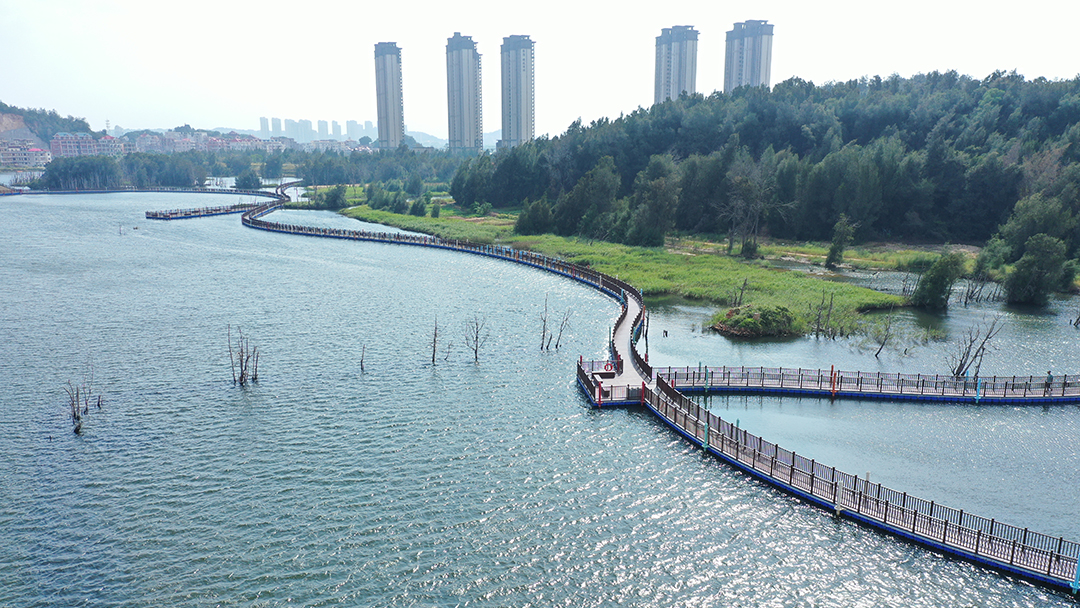
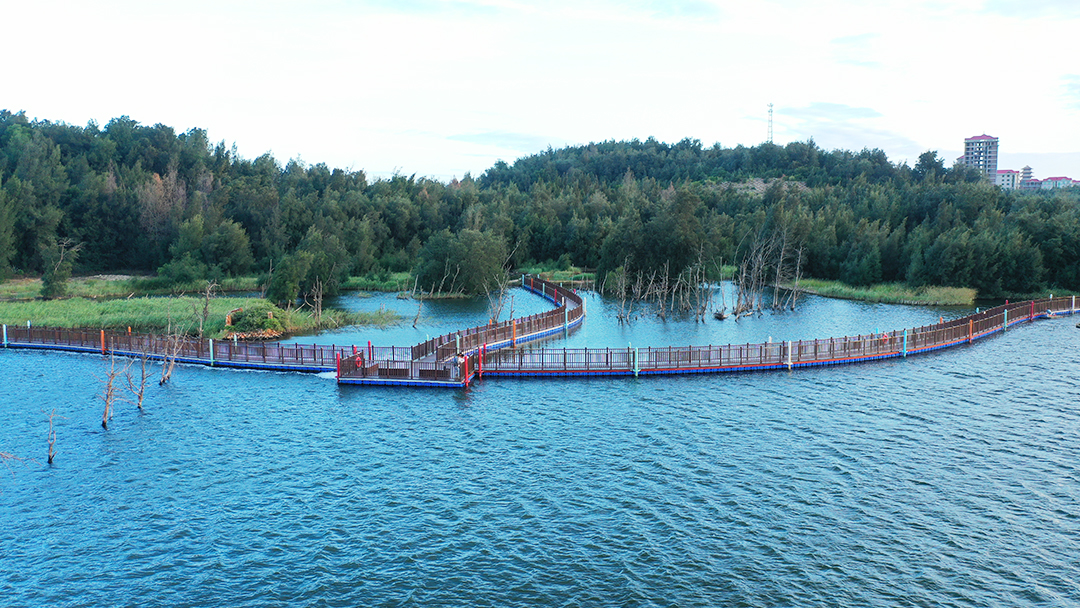

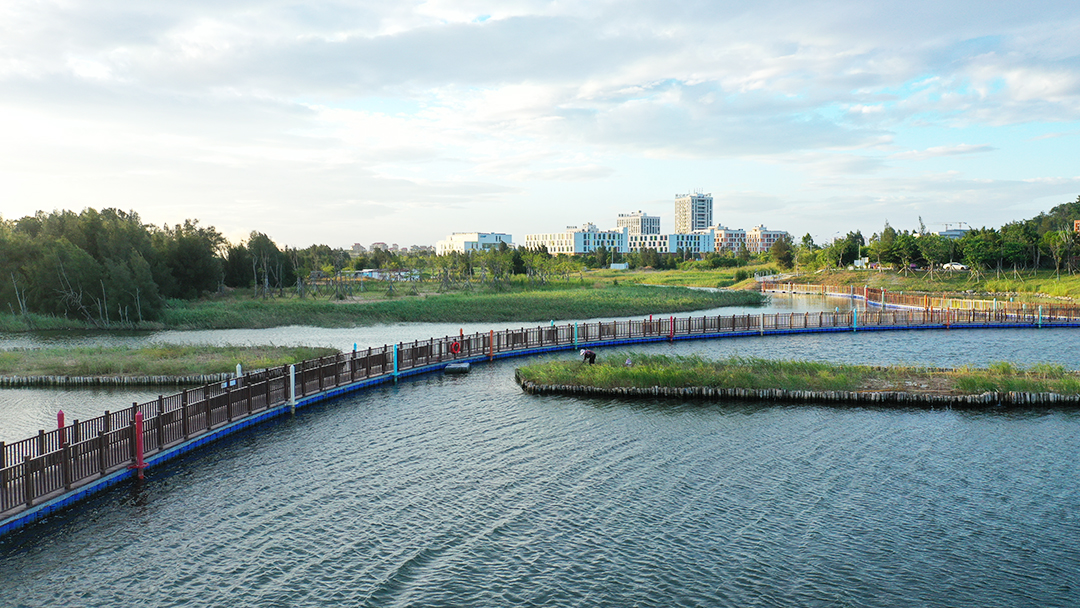
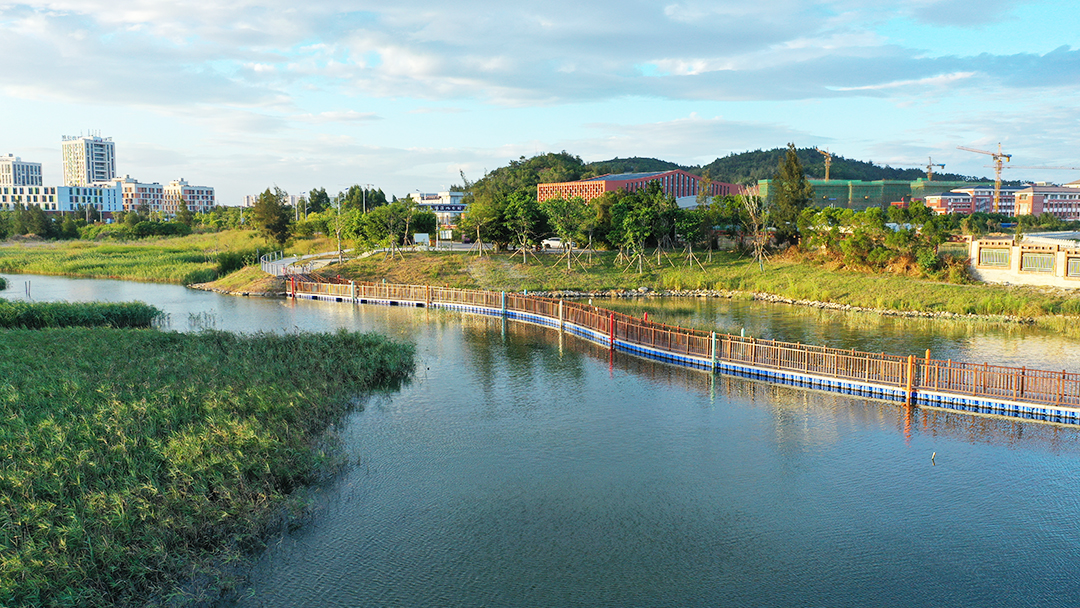
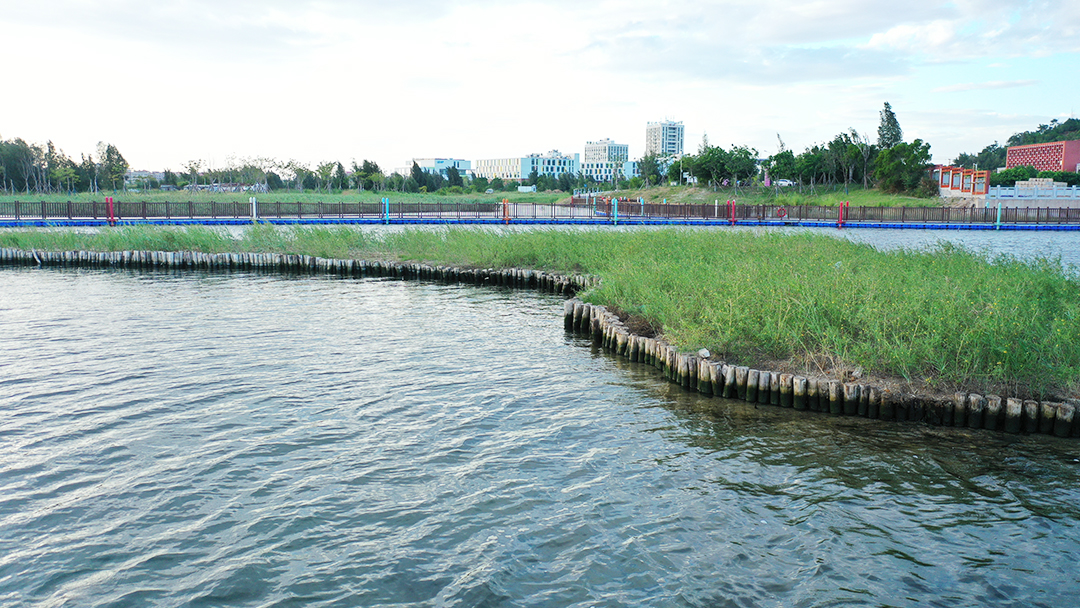
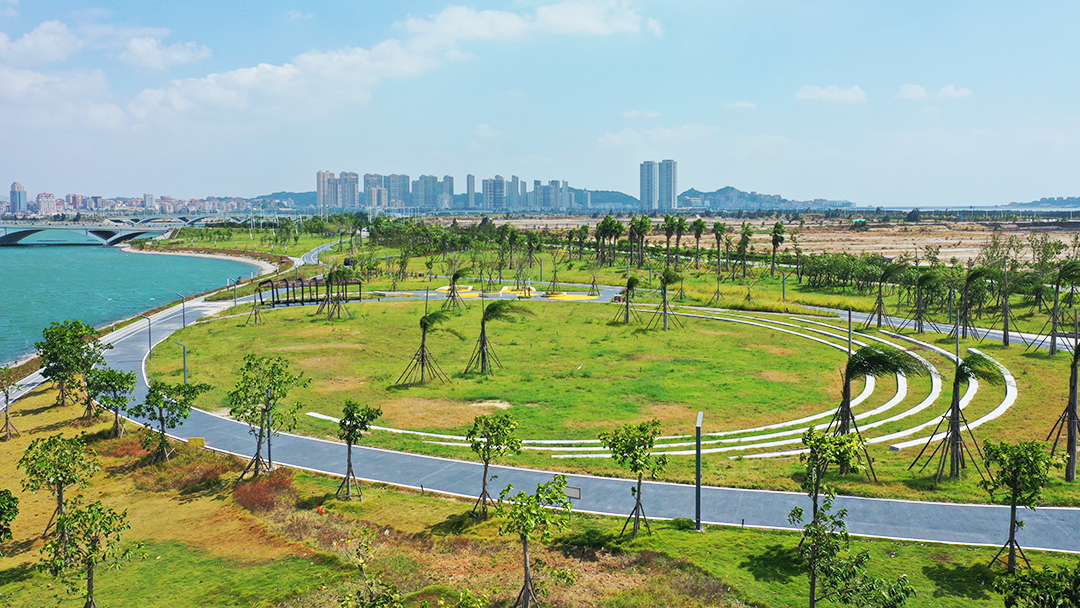


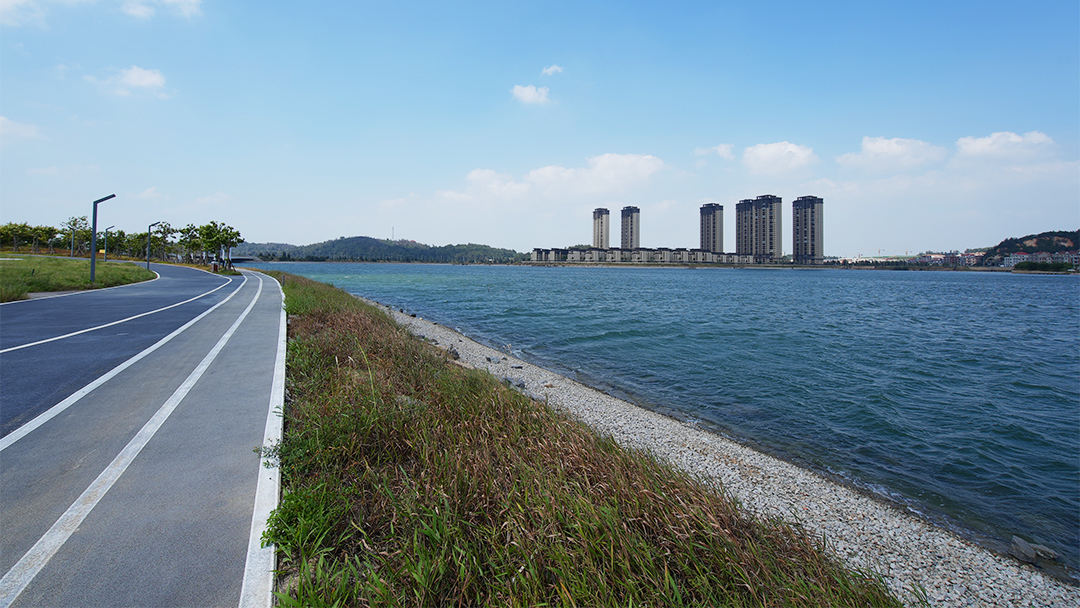
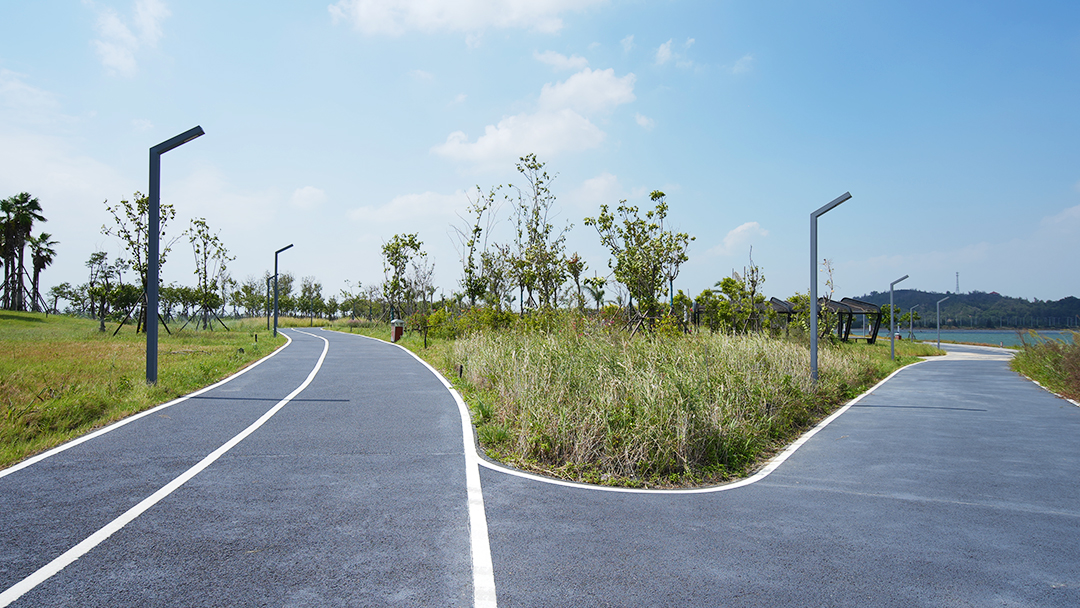
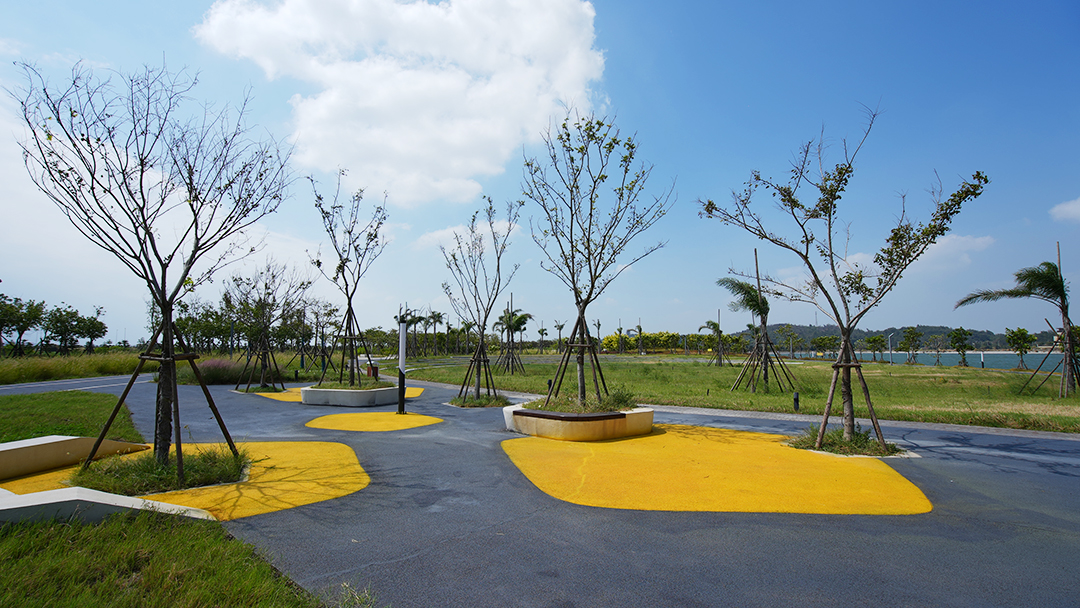
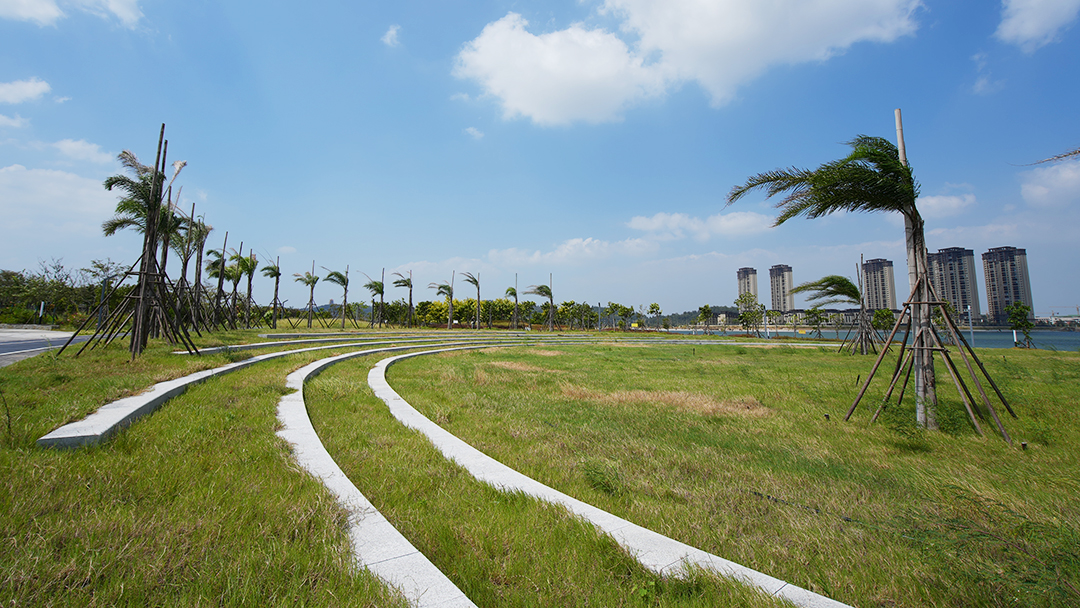
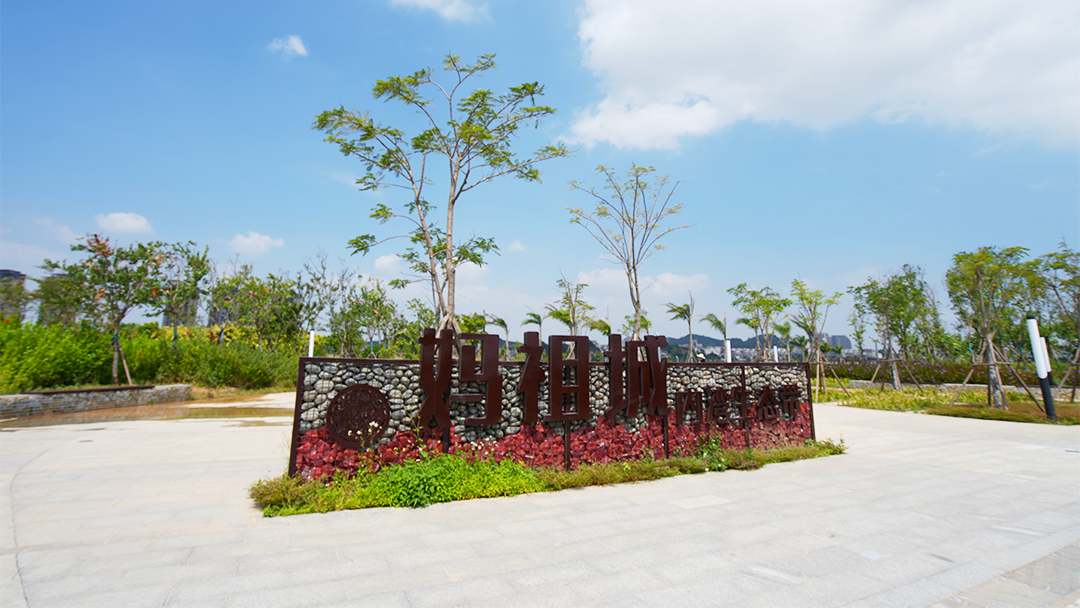
Putian Mazu City Blue Bay Project